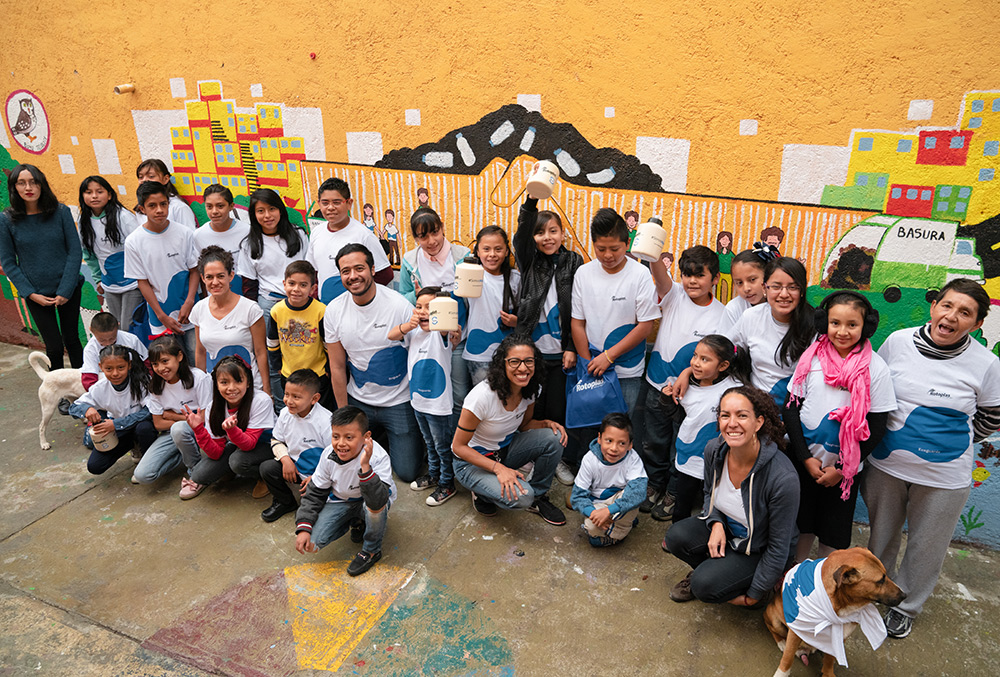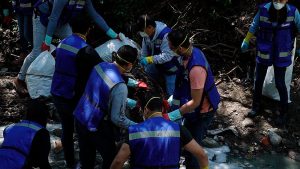| In collaboration with Rotoplas volunteers’ neighbors of Mexico City and the Civil Society, Rotoplas has created a model that can be replicable that deals with environmental and social intervention for the sustainability of the water bodies in the cities. |
Derived from the fourth focus of our sustainability model named “Safeguarding water as a resource for the future”, Grupo Rotoplas organized the first volunteer activity related to cleaning water bodies. Grupo Rotoplas went to the Barranca de Tarango for the cleaning of the Puerta Grande river.
Dicha barranca, y el río que la recorre, están ubicados en el poniente de la Ciudad de México. Juntos, son un área natural cuya extensión es equiparable a la primera sección del bosque de Chapultepec, midiendo más de 267 hectáreas. En 2009 fue declarada Área de Valor Ambiental (AVA).
The Barranca de Tarango and the river that flows through it, are in the west of Mexico City. This natural area is equivalent in extension to the first section of the Chapultepec forest that covers around 267 hectares. In 2009 it was declared Area of Environmental Value.
In despite of their importance the Barranca de Tarango and the river have become a garbage dump. Thus, in collaboration with Ectagono, Rotoplas organized an intervention to revitalize the rivers in various steps and to change the relation of the surrounding communities (La Milagrosa and El Ruedo) with their natural environment.
Through the cleaning sessions various Rotoplas collaborators came to the rescue, principally the ones that work in Rotoplas operations of the valley of Mexico: Planta Anáhuac, Sytesa, Lerma Plant & Services.
In the first session of the volunteering, the cleaning was developed in collaboration with the neighbors of the community with around 40 Rotoplas collaborators. Arriving to Tarango, the collaborators of Ectagono received the volunteers to introduced them to the community, the river and the importance of the activities in development. Once the indications and the materials where received, teams were formed to start working. In the residues that were recollected, we found cloth, tires, mattresses, plastic, and food covers which weighted around 1.8 tons of garbage.
The second day of cleaning was planned to let the participants experience the biodiversity of the environment, in this day 20 Rotoplas collaborators came with the surprise that the number of the community volunteers have increased motivated by the spirit of transforming their community in a positive way.
Before starting with the activities, the community leader, Silvia Bautista, talked about living there in the old times when the river was clean, and the children could go there and play safely and how nowadays they are getting used to the garbage emphasizing in how to recover the river.
The principal reason of the pollution of the river is because the Tarango neighbors have to go up on a stair with 205 steps to get to the garbage containers, so the majority throws away their garbage from their houses to the river. By the end of the cleaning activities, summer courses took place with the presence of around 34 children.
The purpose of this courses was to prepare the kids as “guardians” of the community focusing their attention to the importance of taking care of the water bodies, the sustainability concepts, recycling and reusing.
Some of the materials used in the activities with the children were also materials reused that were found in the cleaning of the river.

At the end of the course a visit was programmed to the Papalote Museo del Niño for letting the kids to know the water pavilion to apply the concepts learned in the summer course.
We invite you to know the project, the results (document in spanish), the alignment with the ODS and the impact in the community.
You can get to know about other sustainability initiatives in our web site: www.rotoplas.com/sustentabilidad




